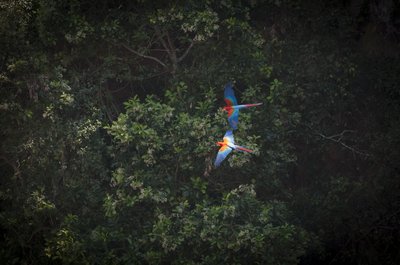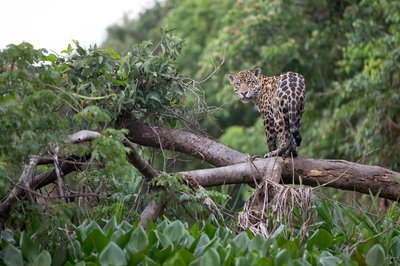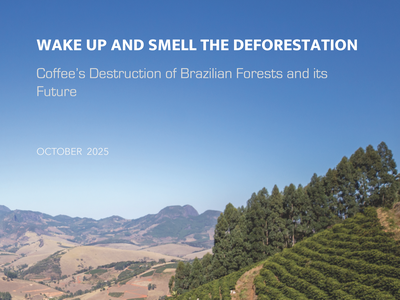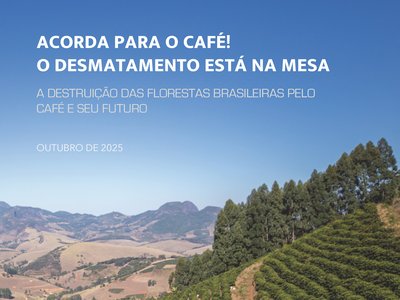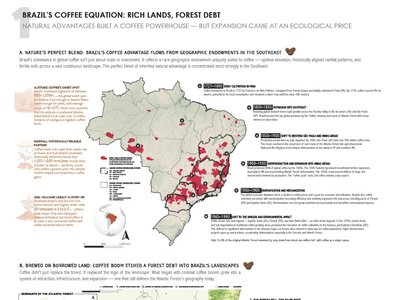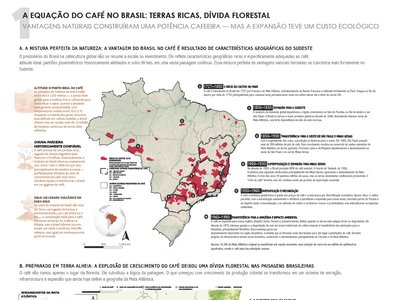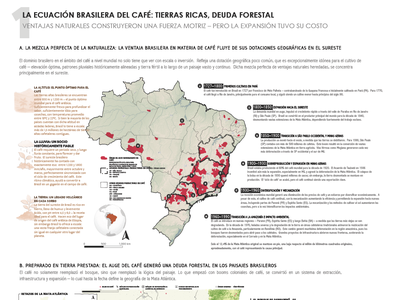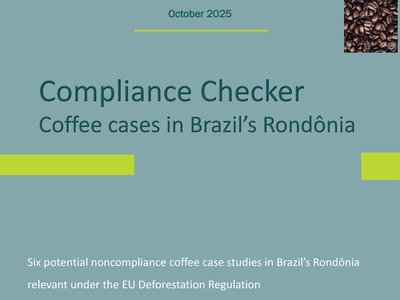FOR IMMEDIATE RELEASE
Brazil coffee mapping shows coffee deforestation the size of Honduras; New report warns of rainfall loss and market risks
Up to two-thirds of Brazil's Arabica area at risk by 2050, report warns
SÃO PAULO, 22 October 2025 — As Brazil prepares to host COP, a groundbreaking Coffee Watch analysis reveals that from 2001 to 2023, Brazil’s coffee heartland lost more than 11 million hectares of forest, a footprint of destruction on the scale of Honduras. Within this vast footprint, at least 312,803 hectares were directly cleared for coffee.
This first-ever integrated mapping shows 737,000 hectares of forest loss inside coffee farms, 77% in the Cerrado and 20% in the Atlantic Forest.
Historical analysis of pre-2000 data also revealed that coffee was a top driver of Atlantic Forest deforestation, with less than 90% of it remaining today. The report links forest loss to drying trends across the coffee belt, and the rainfall losses to crop failures.
In 2014, rainfall fell up to 50% below normal in parts of Minas Gerais, the leading coffee-producing region of Brazil, and 8 of the last 10 years registered deficits. NASA SMAP data show soil moisture declines up to 25% over six years in top coffee-producing zones. A worrying trend in light of coffee’s need for soil moisture to grow.
These climate shocks are also hitting wallets. Landmark droughts in 2016–17, 2019–20 and 2023 slashed yields and contributed to over 40% price rises in 2023–24.
Modeling indicates up to two-thirds of Brazil’s suitable Arabica area could be lost by 2050.
Key findings:
- Coffee cultivation area is over 105% higher in 2023 vs. 1990 (≈0.6M → 1.23M ha).
- Minas Gerais bears the largest ecological toll within the coffee belt.
- Indirect deforestation patterns cluster around expansion zones.
- Coffee is the sixth largest driver of deforestation in the world, and as Brazil exports a third of global coffee, what has happened in Brazil is a big part of that.
“Coffee has driven massive deforestation in Brazil, not just in the last centuries but in the last decades, and it’s still destroying forests to this day,” said Etelle Higonnet, Director of Coffee Watch. “Brazil needs to reverse course urgently because this deforestation isn’t just a carbon and biodiversity disaster – it’s also killing rains and leading to crop failures. Rains are failing where coffee expands at the expense of forests. As a result, climate shocks are hitting wallets. Brazil’s coffee future is on the line.”
A proven solution is barely used
The report indicates that agroforestry zones (e.g., zona da mata) showed greater moisture stability even during droughts—yet less than 1% of Brazil's key coffee zones use agroforestry today. While there is a scalable resilience pathway, adoption is lagging.
EUDR Non-Compliance Cases
Released alongside the Brazil coffee deforestation report, a new investigation from AidEnvironment and Coffee Watch reveals six fresh cases of potential EUDR non-compliance in Rondônia—where coffee was planted directly on land cleared after the European Union Deforestation Regulation’s (EUDR) 2020 cut-off date. As the second in a growing series of company deforestation risk profiles, the report will feed into a forthcoming EUDR Compliance Checker tool. It shows that deforestation risks now reach deep into the Amazon, far beyond Brazil’s traditional Coffee Belt—underscoring the urgent need for companies to be held accountable wherever coffee drives forest loss.
About the analysis: Coffee Watch combined MapBiomas land-use layers, Hansen Global Forest Change, SPAM crop allocation, CHIRPS rainfall and NASA SMAP soil-moisture datasets. Technical contributions: AidEnvironment and Stahnix.
Media contact: Etelle Higonnet, info@coffeewatch.org
